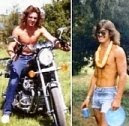Among the lessons of history ....
Sort
of a riddle: What can be old and new in the same instant of time?
How
many answers exist to such a question, I have no idea, but one answer is an
author or a book from years past being read for the first time by an
individual. In that light, here are two authors, one long dead and the other
very much alive while writing in a historical context: Sinclair Lewis and Diane
Wilson.
Lewis,
as every English major born and raised in Minnesota presumably knows, arrived on earth in Sauk Centre, Minnesota, and wrote a number of stories including "Main Street,” which is 100 years old this year. He was here from
1885 to 1951, when he died in Rome. There is a new exhibit at the Minnesota
History Center designed to make his life and work more recognizable. It is something I believe everyone would benefit from seeing ....
Lewis was nominated for the Pulitzer Prize for
his novels "Main Street," "Babbit" and "Arrowsmith." He won for "Arrowsmith,"
but turned down the prize. In 1930, he became the first American to be awarded
the Nobel Prize in Literature.
Lewis
lived in a number of places in Minnesota including Summit Avenue in Saint Paul,
Minneapolis, Duluth, Mankato and Lake Minnetonka. Nine of his novels and six of
his short stories were turned into films, three of the novels twice. His second
wife, Dorothy Thompson, was a well-respected journalist who interviewed Adolph
Hitler and was the first reporter expelled from Germany for anti-Nazi commentary.
Diane
Wilson grew up in Golden Valley, Minnesota, and is a member of the Lac Courte
Oreilles Band of Ojibwe. "The Seed Keeper," is her second novel and third book.
She currently lives on 10 acres near
Shafer. Wilson's
great-great-grandmother, Rosalie Marpiya Mase, was a full-blood Dakota who
married a French-Canadian fur trader, Louis LaCroix.
In
short (more-or-less), the story evolves from how Native American women sewed
seeds into the hems of their dresses and hid more in their pockets to be able
to plan corn and other food in their new homes when they were forcibly marched
from the Lower Sioux Agency to Fort Snelling after the Dakota War of 1862.
According
to a quote from Wilson in a Saint Paul Pioneer Press article by Mary Ann
Grossmann .... "Their actions in protecting seeds to be sure there was food for
their family teaches me what we need to do today to protect seeds for future
generations. That story wanted to be told."
"The Seed Keeper" begins in 2002 when Rosalie
Iron Wing returns to the cabin where she was raised by her father, who taught
her to hunt and to prepare dry meat and fish. She finds carefully-stored old seeds in the cabin
and plants them. From there, the story moves between her contemporary struggles to grow crops from
the old seeds and 1862. Other characters enter the book and start telling the story in
traditional teachings of how we have relationships with food and the effects of
assimilation.
"It
took about 10 years for me to get at that magical, mystical part of seed that
gets people to fall in love with them. I am awed by the brilliance in that
single seed that holds the spark of life. It knows when to be dormant, when to
come to life. It knows what to do. It's beyond comprehension."
The
unnamed author of Ecclesiastes may have been correct when he wrote: " .... there
is no new thing under the sun."
But,
we do not know what we do not know and we all need occasional reminders about
things we already should know. As someone who is in awe of the complexity of life, I plan to read Wilson's book and hope many others will, as well ....

















